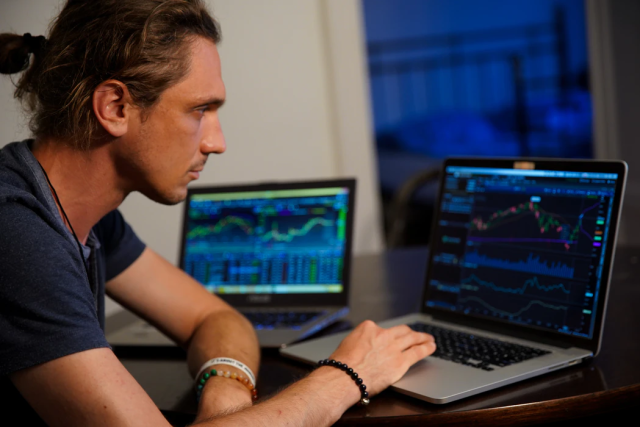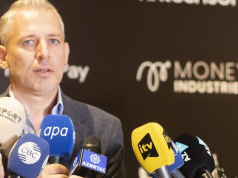As we move further into 2022, two acronyms have become prominent in the financial news cycle – FOMO and YARO. But what do these acronyms mean? Is it possible that one or the other could end up having a long-term impact on the market? And should you care, particularly if you’re new to trading and anxious to expand your knowledge and understanding? We think you should. So read on to learn more about these two terms and whether they are mantras to be followed or shunned.
What does FOMO mean?
FOMO stands for fear-of-missing-out. These days many traders are more than happy to boast about their trading successes on social media. In fact, there are also places where traders talk openly about their losses as well. But typically, we can’t help being envious when we hear that someone has suddenly made a serious amount of money trading a particular stock.
This is where FOMO kicks in. We want what they’ve got, particularly when it all sounds so easy. After all, they only had to buy the stock, watch it go up in price and then book a fat profit. Let’s do the same. Or, as that trader was so successful last time, let’s copy him the next time they buy.
But trading decisions made as a result of FOMO are based on emotion rather than rationality. For instance, if a trader tells the world that he’s making large amounts of money on a sharp rally in a given stock, you may feel that you too should be riding this wave. The more the market moves in one direction, the greater the desire to join in, especially if others are getting on board. There’s nothing worse than reading posts from people boasting about how much money they’re making while you’re stuck on the sidelines.
But all this pressure and expectation can cloud your judgement and result in ill-disciplined trading decisions. Most trades initiated on the back of FOMO result in losses. Often this is because most of the gains have already been made. Often the trader panics and buys at what turns out to be the top of the rally when a bit of patience and technical analysis could warn of a corrective pull-back.
Take the GameStop saga of last year. The stock had already rallied sharply and many people had made a lot of money before Elon Musk sent out a cryptic tweet. Many traders interpreted this as a ‘buy’ recommendation from Mr Musk, so they piled in, driving the stock up by more than 60% in around 60 minutes to hit a level that hasn’t been seen since. The stock then fell close to 80% in the following two hours, which cost a lot of people a lot of money. All because of FOMO.
What does ‘YARO’ mean in trading?
The coronavirus pandemic shook the world. The response from governments was to impose lockdowns, crippling the global economy. Sectors such as hospitality and travel were particularly badly hit. Many companies went under, while others only survived thanks to taxpayer-funded rescue schemes. But as vaccination programmes were rolled out, and economies reopened, a new acronym became prevalent- YARO – or, ‘yet another reopening trade.’ Suddenly, many beaten-down stocks were in favour again as investors anticipated a return to something approaching the old pre-Covid reality.
Montag Wealth Management describes the YARO phenomenon as the inverse of what happened with certain companies that soared when the pandemic hit. For instance, the stock price of Zoom skyrocketed as companies were forced to hold remote meetings. Although it’s worth remembering how Zoom crashed back to more realistic levels once vaccination programmes began to roll out. In contrast, the impact of the ‘reopen’ trade should be longer-lasting, assuming that any new coronavirus variant turns out to be mild.
If that proves to be the case, then those companies that have benefitted from the ‘reopen’ trade may be able to hold on to, and possibly build on their gains. At least for as long as lockdowns are banished and consumer demand roars back to life. All those businesses that suffered so badly due to public health restrictions and whose share prices fell well below their pre-pandemic valuations should now be trading at more reasonable levels..
Unfortunately, this doesn’t tell us where prices may go in the future. According to MarketWatch, the early gains are most likely behind us. What happens next will depend on how investors respond to a variety of factors, particularly geopolitical concerns and judging how aggressive central banks will prove to be when it comes to fighting inflation through tighter monetary policy.
What does this mean for new traders?
YARO is specific. ‘Yet Another Reopening Trade’ can only apply to companies affected by the government-mandated lockdowns which came in response to the coronavirus pandemic. Does that mean we can consign the term to the dustbin? It would be great if we could, but we have to consider that another variant of Covid-19 could be waiting around the corner, and it may not be as benign as Omicron.
In addition, we can now be clear on how politicians will react to the arrival of another highly infectious and dangerous disease. Whereas most of the world carried on much as normal when there were outbreaks of SARS and MERS, that won’t be what happens if something similar were to emerge in future. It seems incredible that in recent memory the world lived largely unrestricted through the Swine Flu pandemic of 2009/10, the Hong Kong flu outbreak of 1968/9, the Asian Flu crisis of 1957/8 or more seriously the ‘Spanish Flu’ just over 100 years ago.
And let’s look at this more broadly. Stuff happens, including the LTCM melt-down in the 1990s, the Dot-Com bust at the beginning of this century and the Great Financial Crisis of 2008/9. In each case, stock and asset prices collapsed, but many of those assets rebounded strongly later. So, there’s a good chance that YARO, or something similar, will be resurrected.
FOMO is different. The Fear of Missing Out is something that traders have to cope with all the time. This fear is made worse if you believe that everyone else has already got on board. That is never true. So, put aside thoughts about what other traders are doing and concentrate on yourself. You may decide to diversify the markets you trade. If so, Forbes has a handy guide that includes additional tips on how to prudently diversify your portfolio.
But most importantly, make sure you manage your risk. There are some tried and tested ways to do this. For instance, you can set up stop-loss orders that automatically close your open positions when a specified level is reached. Trade Nation’s free trading simulator lets you see virtually how these work in practice, allowing you to experiment with your trades on different markets, using stops and limits.
So, make sure you banish FOMO from your trading vocabulary. Instead, study your favourite markets and plan your trades accordingly. Make sure you are comfortable with your risk parameters and think carefully about where to place your stops and limits. This will help you become a profitable trader over time. As far as YARO is concerned, keep it in mind. You never know what is around the corner. But if you can learn lessons from how markets have reacted to major and unexpected events in the past, you’ll be better prepared to take advantage of them in the future.













